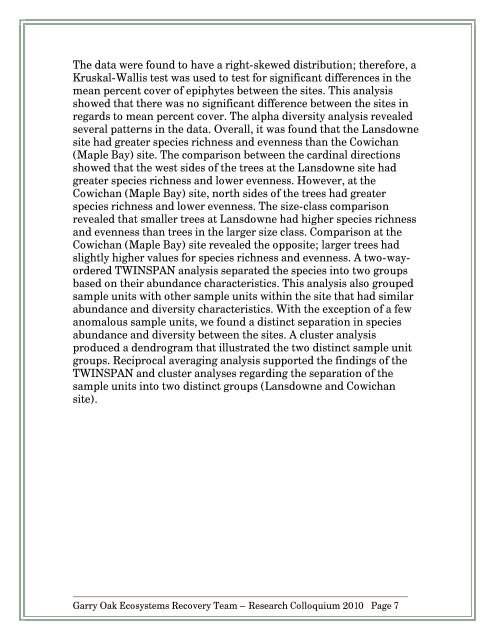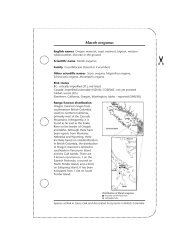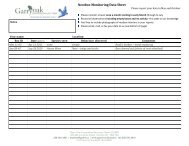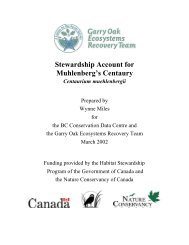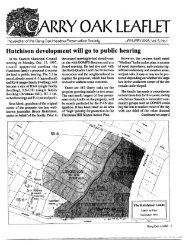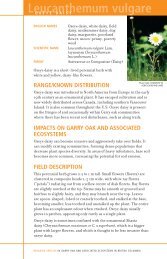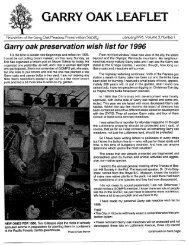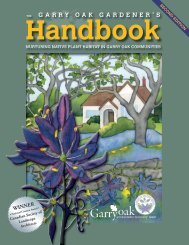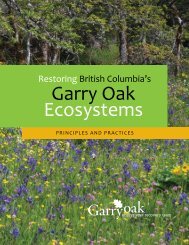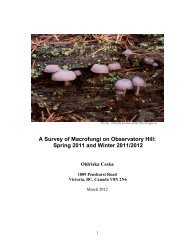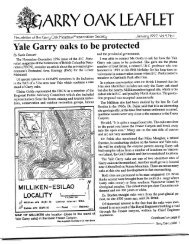PDF 320KB - Garry Oak Ecosystems Recovery Team
PDF 320KB - Garry Oak Ecosystems Recovery Team
PDF 320KB - Garry Oak Ecosystems Recovery Team
Create successful ePaper yourself
Turn your PDF publications into a flip-book with our unique Google optimized e-Paper software.
The data were found to have a right-skewed distribution; therefore, a<br />
Kruskal-Wallis test was used to test for significant differences in the<br />
mean percent cover of epiphytes between the sites. This analysis<br />
showed that there was no significant difference between the sites in<br />
regards to mean percent cover. The alpha diversity analysis revealed<br />
several patterns in the data. Overall, it was found that the Lansdowne<br />
site had greater species richness and evenness than the Cowichan<br />
(Maple Bay) site. The comparison between the cardinal directions<br />
showed that the west sides of the trees at the Lansdowne site had<br />
greater species richness and lower evenness. However, at the<br />
Cowichan (Maple Bay) site, north sides of the trees had greater<br />
species richness and lower evenness. The size-class comparison<br />
revealed that smaller trees at Lansdowne had higher species richness<br />
and evenness than trees in the larger size class. Comparison at the<br />
Cowichan (Maple Bay) site revealed the opposite; larger trees had<br />
slightly higher values for species richness and evenness. A two-wayordered<br />
TWINSPAN analysis separated the species into two groups<br />
based on their abundance characteristics. This analysis also grouped<br />
sample units with other sample units within the site that had similar<br />
abundance and diversity characteristics. With the exception of a few<br />
anomalous sample units, we found a distinct separation in species<br />
abundance and diversity between the sites. A cluster analysis<br />
produced a dendrogram that illustrated the two distinct sample unit<br />
groups. Reciprocal averaging analysis supported the findings of the<br />
TWINSPAN and cluster analyses regarding the separation of the<br />
sample units into two distinct groups (Lansdowne and Cowichan<br />
site).<br />
<strong>Garry</strong> <strong>Oak</strong> <strong>Ecosystems</strong> <strong>Recovery</strong> <strong>Team</strong> – Research Colloquium 2010 Page 7


